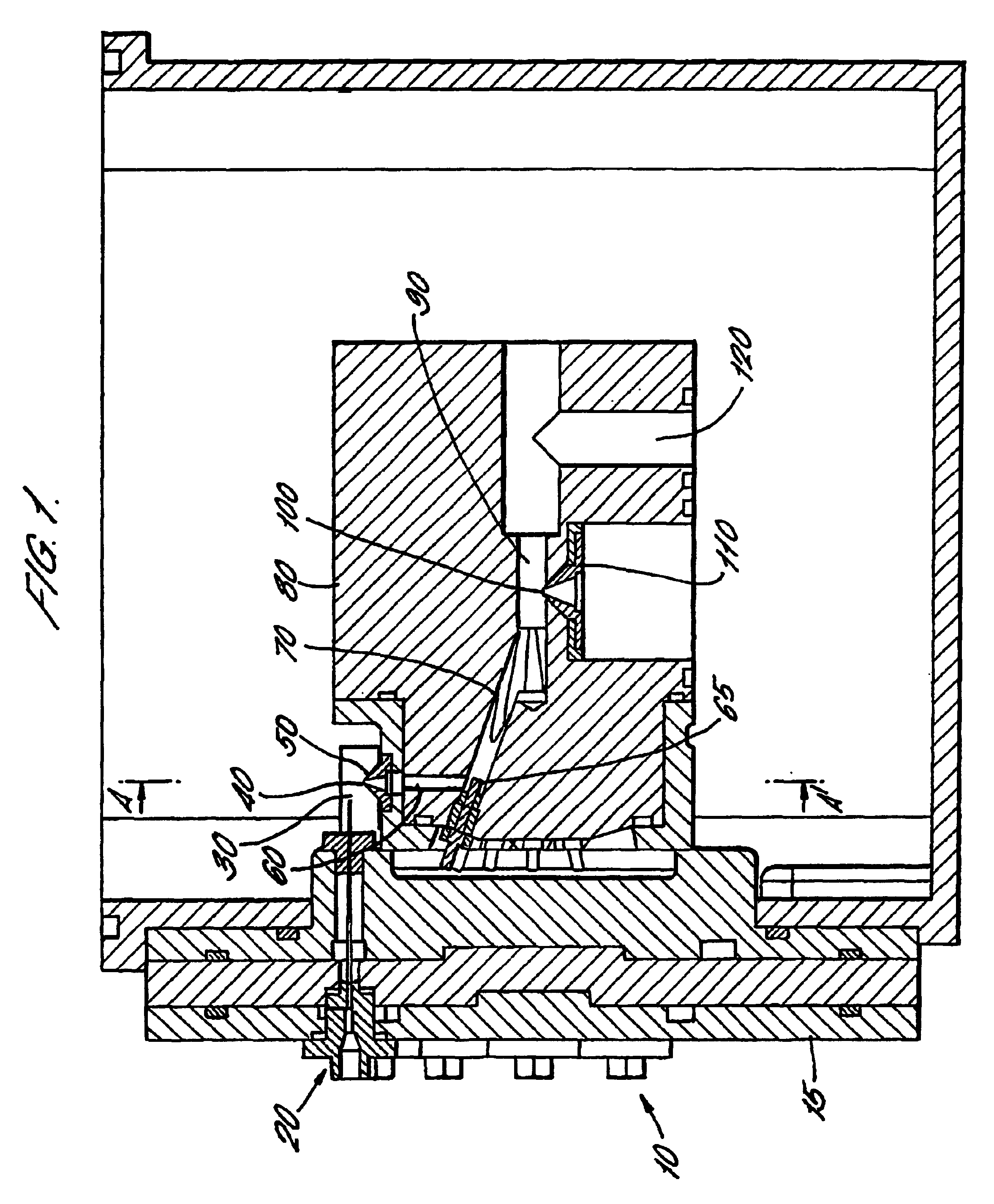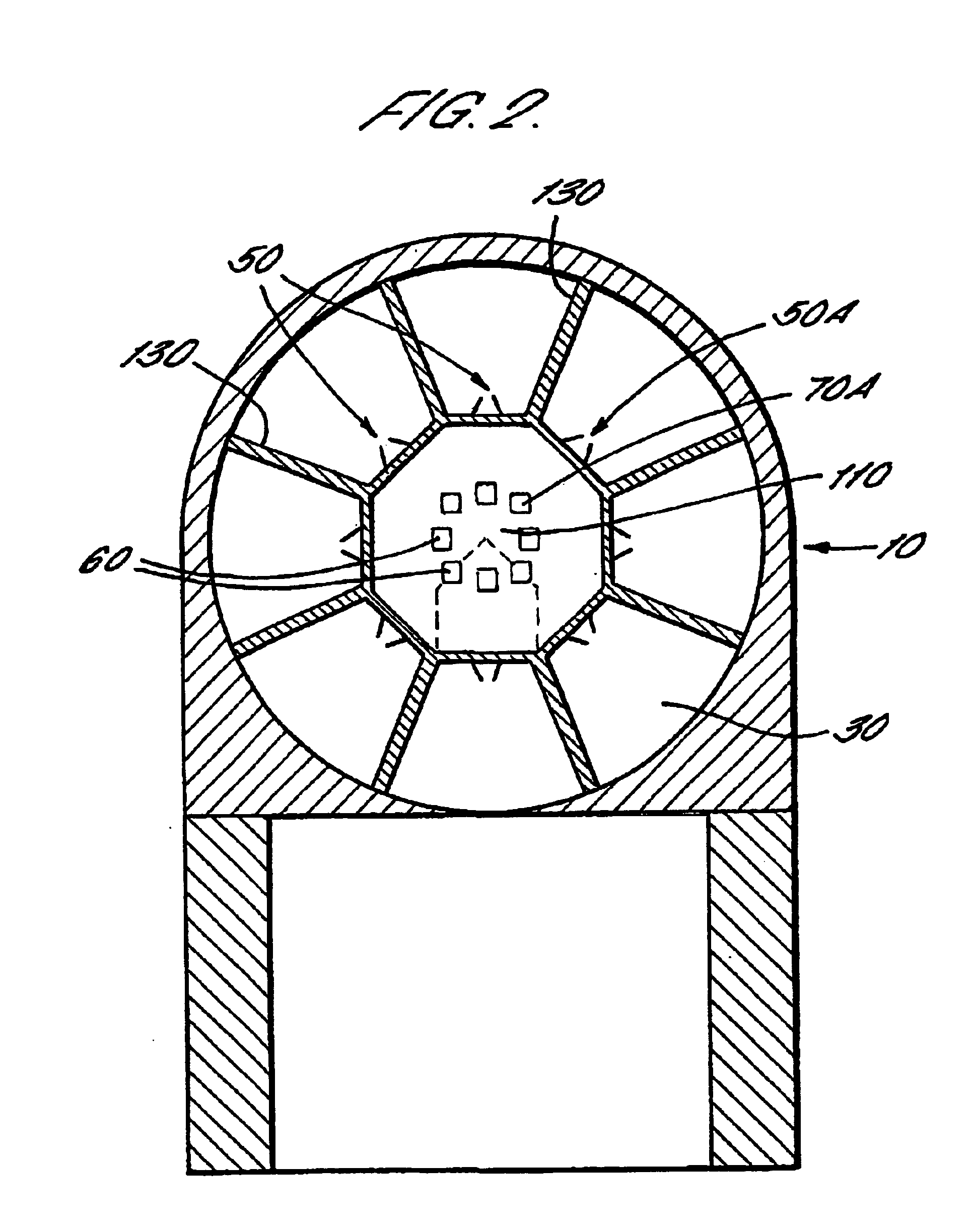Multi-inlet mass spectrometer
a mass spectrometer and multi-inlet technology, applied in the field of ion sources for mass spectrometers, can solve the problems of slow reaction speed, cumbersome rotating sample selectors, difficult to engineer reliably, etc., and achieve the effect of increasing the rate at which a large number of samples are collected, reducing the rate of chemical reaction between the different sample ions, and increasing the analysis speed
- Summary
- Abstract
- Description
- Claims
- Application Information
AI Technical Summary
Benefits of technology
Problems solved by technology
Method used
Image
Examples
Embodiment Construction
[0027]Referring first to FIG. 1, an ion source, generally indicated at 10, is shown.
[0028]The ion source 10 has a front face 15 and includes a plurality of atmospheric pressure sample ionisers 20, mounted therein. A variety of different ionisers are suitable, such as an electrospray ion source, an atmospheric pressure chemical ionisation (APCI) ion source or a matrix-assisted laser desorption / ionisation (MALDI) ion source. As will be familiar to those skilled in the art, the ioniser 20 is provided with a flow of solvent containing a sample to be analysed. Typically, this flow is produced by separating the sample molecules by liquid chromatography or capillary electrophoresis. However, other techniques such as fast liquid chromatography and capillary electrochromatography can be used as well.
[0029]Each ioniser 20 extends into a corresponding sample region 30, which is again at or around atmospheric pressure. The sampling region 30 is defined between the end of each ioniser 20 and an ...
PUM
 Login to View More
Login to View More Abstract
Description
Claims
Application Information
 Login to View More
Login to View More - R&D
- Intellectual Property
- Life Sciences
- Materials
- Tech Scout
- Unparalleled Data Quality
- Higher Quality Content
- 60% Fewer Hallucinations
Browse by: Latest US Patents, China's latest patents, Technical Efficacy Thesaurus, Application Domain, Technology Topic, Popular Technical Reports.
© 2025 PatSnap. All rights reserved.Legal|Privacy policy|Modern Slavery Act Transparency Statement|Sitemap|About US| Contact US: help@patsnap.com



